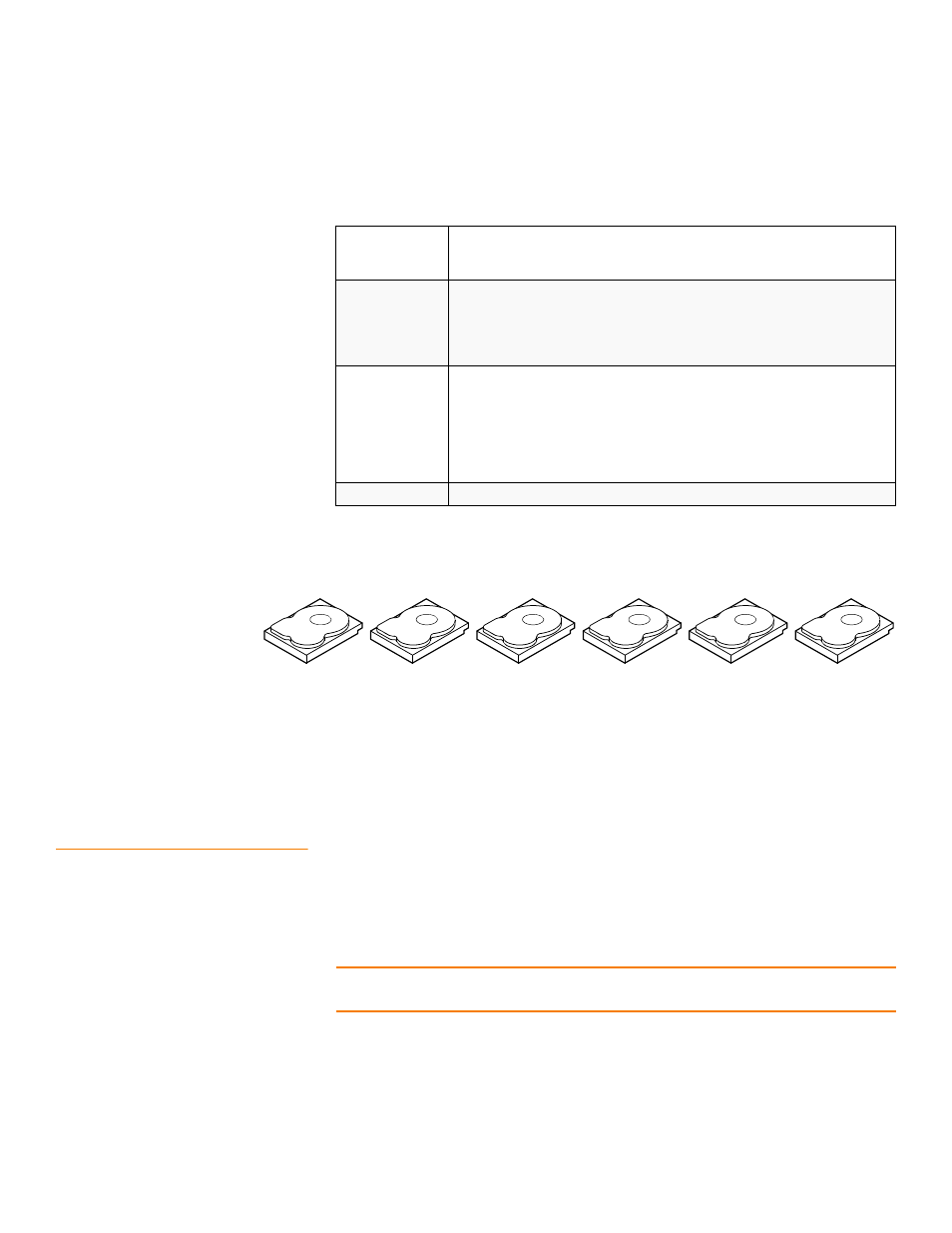7 raid 00 – Avago Technologies MegaRAID Fast Path Software User Manual
Page 36

Page 36
LSI Corporation Confidential
|
July 2011
MegaRAID SAS Software User Guide
Chapter 2: Introduction to RAID
|
RAID Levels
provides an overview of a RAID 6 drive group.
shows a RAID 6 data layout. The second set of parity drives is denoted by Q.
The P drives follow the RAID 5 parity scheme.
Figure 10:
Example of Distributed Parity across Two Blocks in a Stripe (RAID 6)
2.5.7
RAID
00
A RAID 00 drive group is a spanned drive group that creates a striped set from a series
of RAID 0 drive groups. RAID 00 does not provide any data redundancy, but, along with
RAID 0, does offer the best performance of any RAID level. RAID 00 breaks up data into
smaller segments and then stripes the data segments across each drive in the drive
groups. The size of each data segment is determined by the stripe size. RAID 00 offers
high bandwidth.
NOTE: RAID level 00 is not fault tolerant. If a drive in a RAID 0 drive group fails, the entire
virtual drive (all drives associated with the virtual drive) fails.
Table 10: RAID 6 Overview
Uses
Use for office automation and online customer service that requires fault
tolerance. Use for any application that has high read request rates but low
write request rates.
Strong points
Provides data redundancy, high read rates, and good performance in most
environments. Can survive the loss of two drives or the loss of a drive while
another drive is being rebuilt. Provides the highest level of protection
against drive failures of all of the RAID levels. Read performance is similar to
that of RAID 5.
Weak points
Not well-suited to tasks requiring a lot of writes. A RAID 6 virtual drive has to
generate two sets of parity data for each write operation, which results in a
significant decrease in performance during writes. Drive performance is
reduced during a drive rebuild. Environments with few processes do not
perform as well because the RAID overhead is not offset by the performance
gains in handling simultaneous processes. RAID 6 costs more because of the
extra capacity required by using two parity blocks per stripe.
Drives
3 through 32
Segment 1
Segment 6
Segment 2
Segment 7
Segment 3
Segment 8
Segment 4
Parity (P5-P8)
Parity (P1-P4)
Parity (Q5-Q8)
Parity (Q9–Q12)
Parity (Q1-Q4)
Segment 5
Note: Parity is distributed across all drives in the drive group.
Segment 10
Parity (P9-P12)
Segment 9
Segment 12
Segment 11
Segment 16
Parity (P17-P20)
Parity (P13-P16)
Segment 19
Segment 15
Segment 17
Segment 13
Segment 18
Segment 14
Parity (Q17-Q20)
Parity (Q13-Q16)
Segment 20
- MegaRAID SAS 9240-4i MegaRAID SAS 9240-8i MegaRAID SAS 9260-16i MegaRAID SAS 9260-4i MegaRAID SAS 9260-8i MegaRAID SAS 9261-8i MegaRAID SAS 9280-16i4e MegaRAID SAS 9280-4i4e MegaRAID SAS 9280-8e MegaRAID SafeStore Software MegaRAID SAS 9361-4i MegaRAID SAS 9361-8i MegaRAID SAS 9266-4i MegaRAID SAS 9266-8i MegaRAID SAS 9270-8i MegaRAID SAS 9271-4i MegaRAID SAS 9271-8i MegaRAID SAS 9271-8iCC MegaRAID SAS 9286-8e MegaRAID SAS 9286CV-8e MegaRAID SAS 9286CV-8eCC MegaRAID CacheCade Pro 2.0 Software MegaRAID SAS 9341-4i MegaRAID SAS 9341-8i MegaRAID SAS 9380-8e MegaRAID SAS 9380-4i4e
